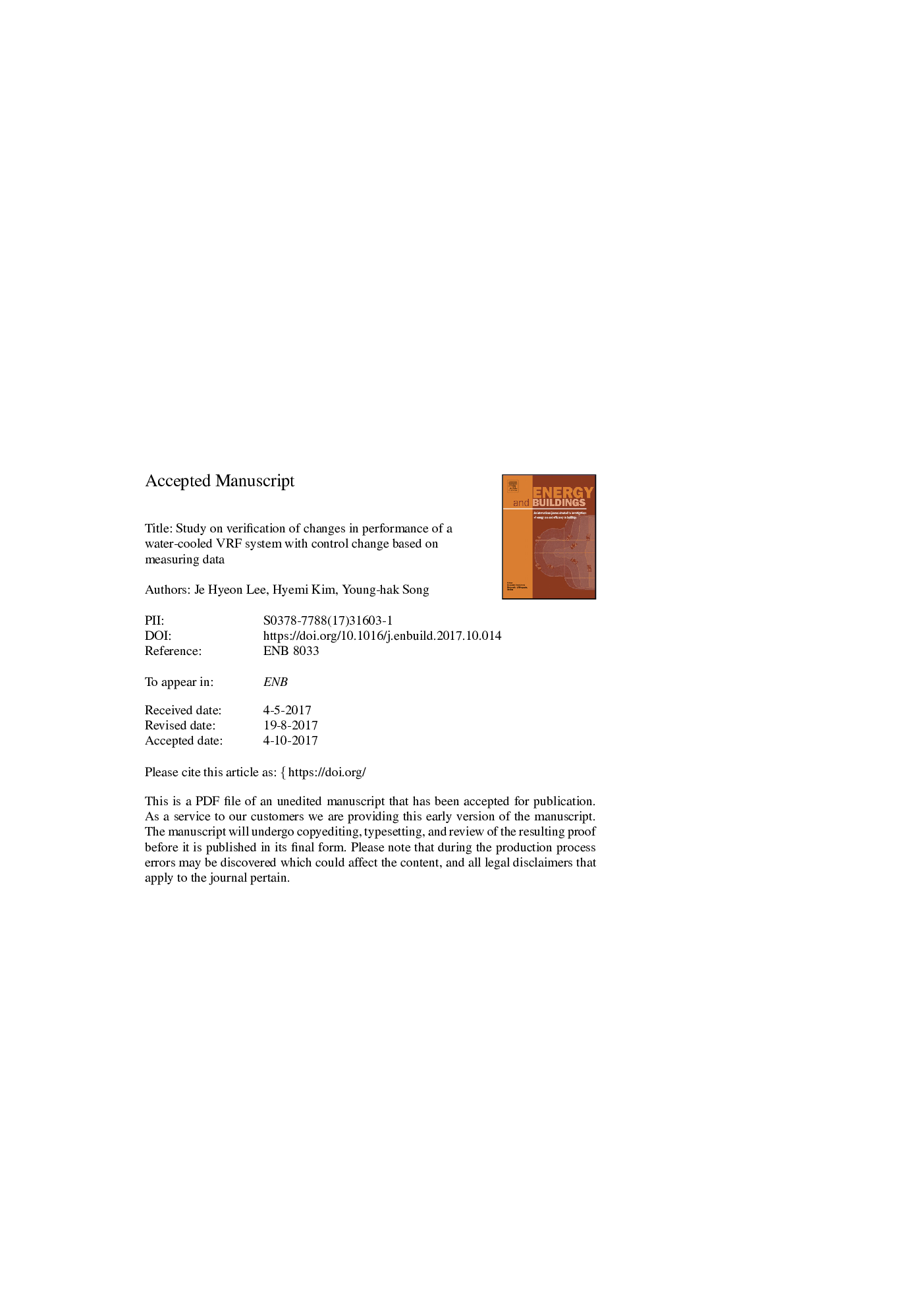| Article ID | Journal | Published Year | Pages | File Type |
|---|---|---|---|---|
| 6729455 | Energy and Buildings | 2018 | 21 Pages |
Abstract
A variable refrigerant flow (VRF) system is convenient to install and manage as well as the operability via occupants is superior compared to a chiller system. Thus, the use of the VRF system has increased in East Asia and Europe in recent years. In particular, a water-cooled VRF system can solve a space problem of installation for outdoor units in existing air-cooled systems. Thus, it can be applicable to large-sized buildings. However, most cooling tower operations are done with the same setup regardless of the changes in outdoor conditions during the operating period, which is a conservative method for a water-cooled mode. The present study aims to improve the performance of outdoor units in the VRF by reducing the temperature of cooling water to a lower temperature than the existing setup value and verify this through actual measurements. To do this, a new algorithm for a cooling tower operation was developed and applied to a six-week operation during the summer to analyze the effect of the change in setup value. The result showed that power consumption of the cooling tower system and VRF outdoor unit was reduced by 24% and 5.9%, respectively due to the new setup and the coefficient of performance (COP) of the outdoor unit and system was improved by 7.3% and 12.7%, respectively thereby reducing an operation cost by 11%.
Related Topics
Physical Sciences and Engineering
Energy
Renewable Energy, Sustainability and the Environment
Authors
Je Hyeon Lee, Hyemi Kim, Young-hak Song,
